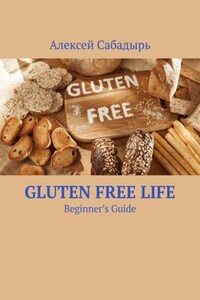Chapter 1: Understanding Gluten and Its Impact on Health
Introduction to Gluten: Study of the nature and origin of gluten, analysis of its presence in various foods and its role in the food industry.
What is celiac disease?: Understanding the autoimmune condition caused by gluten consumption, its symptoms, diagnosis and prevalence.
Gluten Sensitivity: Expanding the concept of gluten sensitivity, its symptoms, and the growing recognition of the condition.
Gluten and the body
Effects on Digestion: A detailed description of how gluten interacts with the digestive system, including its effect on the intestinal lining and the development of inflammation.
Beyond Digestion: Exploring the potential systemic effects of gluten, ranging from skin problems to neurological consequences.
The Science and Impact of Gluten
Gluten and Autoimmunity: A dive into the mechanisms by which gluten can trigger autoimmune reactions, including molecular mimicry and immune system activation.
Area of Research: Covers the latest scientific research and findings regarding gluten-related health issues.
Sources of Hidden Gluten: Identifying unexpected sources of gluten in foods, cosmetics, medications and everyday items.
Reading Labels: A guide to deciphering food labels and recognizing gluten-related terminology so you can make informed food choices
The Rise of Gluten Awareness: Tracing the evolution of gluten awareness in modern society, from dietary trends to increasing incidence of gluten-related illnesses.
The Gluten-Free Movement: Exploring the rise of gluten-free foods, lifestyle changes, and the influence of media and health trends.
Wrap-up: Recap key ideas and set the stage for exploring gluten-free living in subsequent chapters.
The purpose of this comprehensive chapter is to educate readers about the complexities surrounding gluten, its health effects, and the basics of adopting a gluten-free lifestyle.
Chapter 2: Transition to Transition: Your Journey to a Gluten-Free Lifestyle.
Assessing your readiness: Reflect on your personal motivations and reasons for adopting a gluten-free lifestyle.
Kitchen Makeover: Tips to declutter your pantry, understand hidden sources of gluten, and stock up on gluten-free pantry essentials.
Education and Empowerment: Understanding food labels, recognizing gluten-containing ingredients, and finding safe alternatives.
Building a support system: Build a support network, find online communities, and seek advice from health professionals or nutritionists.
Navigating Social Settings: Strategies for managing social events, dining out, and communicating the dietary needs of friends, family, and restaurants.
Managing cravings and withdrawal: Mechanisms for coping with cravings and adapting to changes in diet and taste preferences.
Meal Planning and Prep: Step-by-step instructions for planning gluten-free meals, tips for grocery shopping, and preparing portions for convenience.
Gluten-Free Travel: Tips for maintaining a gluten-free lifestyle while traveling, including researching, socializing, and packing essentials.
Emotional and mental well-being
Emotional Resilience: Addressing the emotional aspects of transitioning to a new lifestyle, dealing with disappointment, and celebrating small victories.
Mindful Eating Practice: Encouraging the development of mindful eating habits, interactions with food, and presence while eating.
Journal of your journey: Keep a food journal, track your progress, and notice changes in your health, energy levels, and overall well-being.
Making adjustments: Understanding that transition takes time and adjusting plans and approaches based on personal experience and feedback.
Celebrating Milestones: Reflecting on accomplishments and setting realistic expectations for the ongoing journey toward a sustainable gluten-free lifestyle.
This chapter offers a practical roadmap for readers embarking on a gluten-free lifestyle, addressing challenges, providing guidance, and promoting a positive mindset for a successful transition and long-term commitment.
Chapter 3: Benefits of Going Gluten Free: Energy Release and Feeling Good
This chapter is an exploration of the potential benefits of switching to a gluten-free diet, particularly in terms of how it can affect energy levels and overall well-being. Firstly, we could dive into what gluten actually is and its role in our diet. Gluten, a protein found in wheat, barley and rye, is known to cause problems in people with celiac disease, gluten sensitivity or wheat allergies. A detailed description of these conditions and how they manifest can help readers determine whether they will benefit from a gluten-free lifestyle.
Next, we could discuss the potential benefits of going gluten-free. Many proponents claim that increased energy levels, reduced digestive discomfort, and improved overall well-being are key benefits. Including personal stories or case studies of people who experienced these improvements could add an interesting touch.














